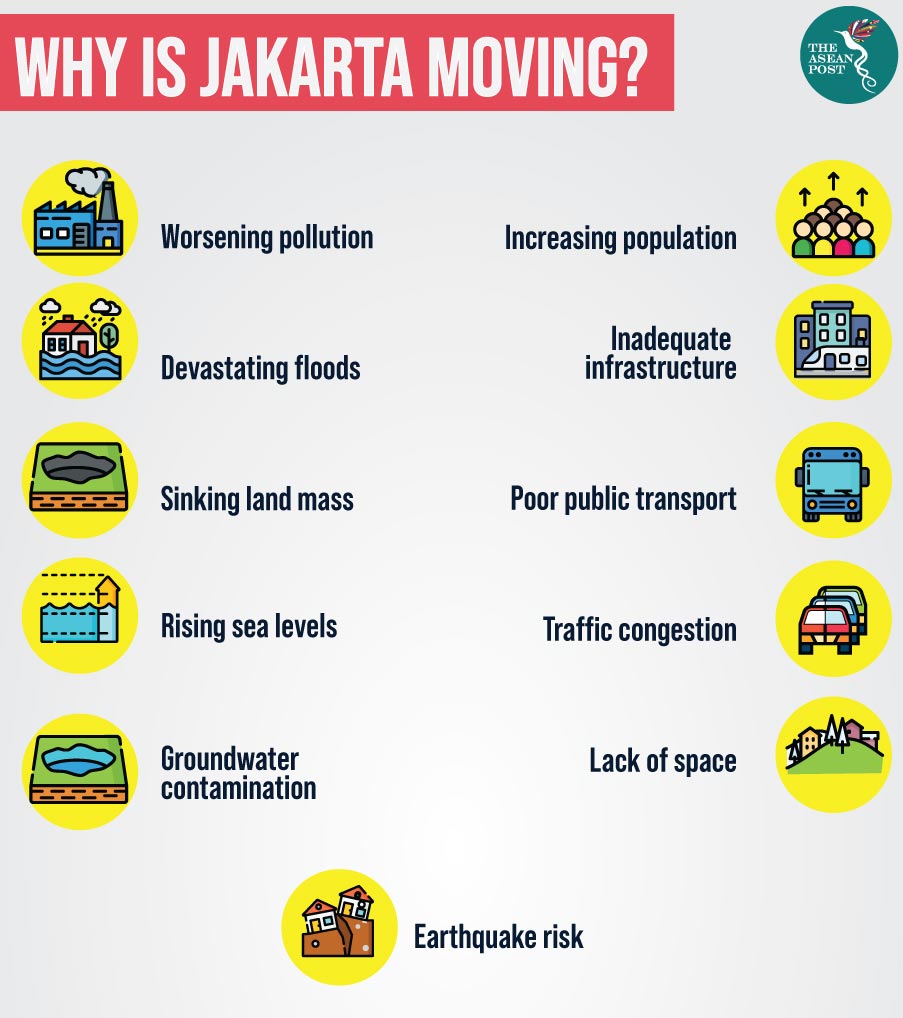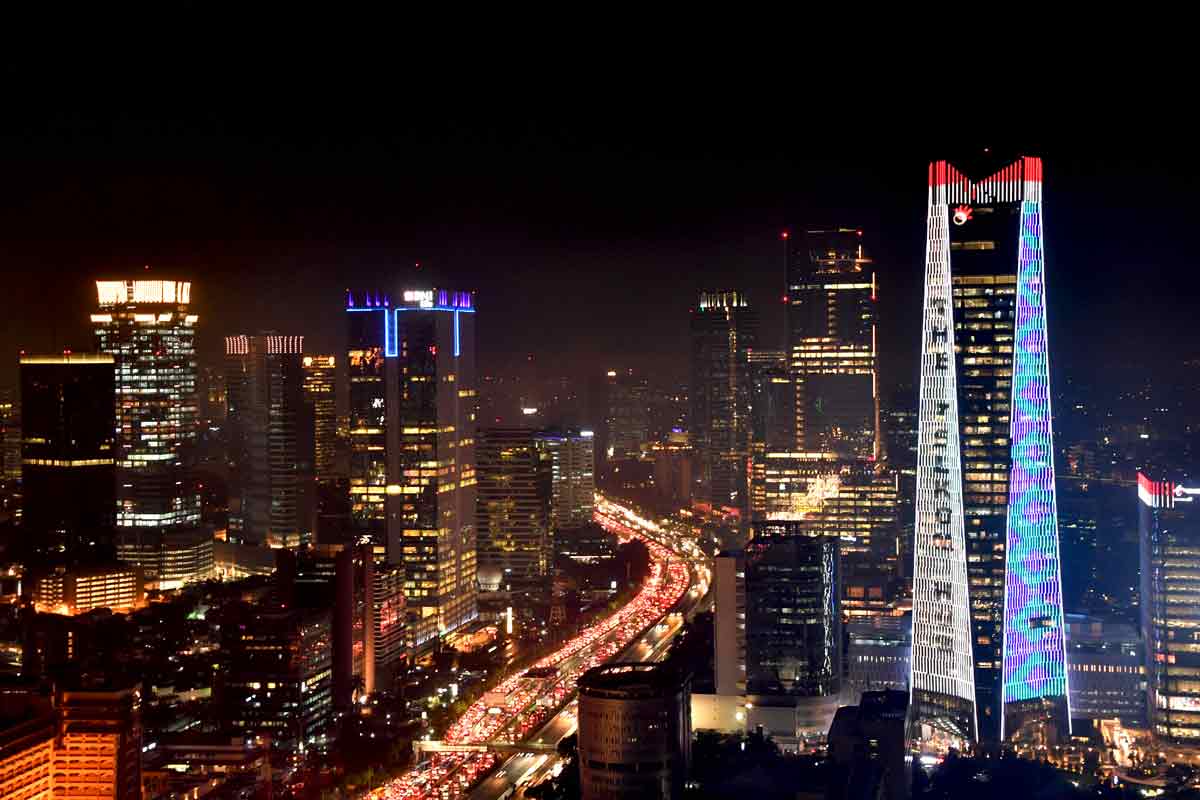Indonesia’s decision to move its capital from Jakarta raises several key questions for Southeast Asia’s largest economy.
Faced with notorious traffic jams, rapid sinking and a host of other problems, Indonesia’s President Joko “Jokowi” Widodo last week officially announced plans to shift ASEAN’s most populous capital to Kalimantan – an area on Borneo, an island which Indonesia shares with Malaysia and Brunei.
With Indonesia located in the Ring of Fire, Kalimantan was identified as a possible location for the new capital as it has the least potential for natural disasters.
Promising that the concept is “well-planned”, the president said the move will ensure equitable economic development for the country’s population of around 270 million people spread out across nearly 17,000 islands. About 1.5 million civil servants are expected to start moving by 2024 as Jokowi ends his second and final term in office.
“We have to see the bigger picture for our people and country for the next 10, 50, 100 years,” said Jokowi.
However, the fact is that this bigger picture requires a move to another island, in one of the world’s last remaining virgin rainforests, and with none of the infrastructure needed to sustain a capital city.

Why move?
Talk of moving capitals is nothing new in Indonesia.
It was first mooted by Indonesia’s founding father, President Sukarno, in 1957 – with President Suharto and President Susilo “SBY” Bambang Yudhoyono also bringing up the idea in the years since.
Jakarta is a city of 10 million people which has three times that number in the greater urban area, and congestion costs the city around US$4 billion each year thanks in part to the lack of an integrated pubic-transport system.
Like other major cities in ASEAN, pollution is also a problem and the city’s residents can expect to cut 2.3 years off their life expectancy if 2016 pollution levels are sustained over time, according to a study released by the University of Chicago in March.
Unchecked groundwater extraction due to the lack of an affordable piped water system is another key issue the capital city has been unable to effectively address.
Some parts of the city lie four metres below sea level, and rising sea levels and monsoon rains are contributing to increasingly devastating floods every year. The draining of aquifers is causing land subsidence – the sinking of the Earth’s surface – by as much as 25 centimetres a year in some areas, and one third of the city could be below sea level by 2050.
Challenges
The distance between Jakarta and the new capital will be a logistical nightmare unless a bridge or rail connection is built. This is highly unlikely considering the distance between Jakarta and Palangkaraya – one of the three sites identified for the new capital, and the nearest to Jakarta – is 900 kilometres, the majority of that over the Java Sea.
The new capital is expected to cost Indonesia US$33 billion. With Indonesia’s National Development Planning Agency (Bappenas) announcing plans to spend US$400 billion in infrastructure projects in May, funding for the new capital will be one of the most talked about topics.
Jokowi has said 25 percent of the sum needed to build the new capital will be sourced from the state budget while the rest will be covered by public-private partnerships, with the state budget only used to construct and establish basic public infrastructures.
This is surprising considering it was only in 2017 that the Indonesian Supreme Court ruled against the privatisation of water services in Jakarta – a practice which went on for 20 years and forced many Jakarta residents to turn to wells, which directly contributed to the serious land subsidence problem the city is facing now.
Apart from raising the funds needed to bankroll the new capital, Jokowi will also have to finance existing infrastructure projects and service foreign debts.
Capital cities possess the talent needed to drive businesses, and it will be a challenge attracting quality talent to Kalimantan – an area more known for its rainforests, orangutans and oil palm plantations than anything else.
Industrial-scale forest clearing for oil palm cultivation, agriculture, mining and logging has wreaked havoc on Kalimantan’s local population and eco-system, and indigenous rights activists have warned that land grabs could increase the risk of conflicts between the indigenous population and migrants.
Experts such Rendy A. Diningrat from Jakarta’s Social Monitoring and Early Response Unit (SMERU) Research Institute believe that the transfer of the capital seems like “an attempt to escape the problem of chronic diseases” that the city needs to immediately arrest – or face the risk of paralysing the country’s economy.
According to Rendy, Bappenas has never actually publicised its study of the capital transfer, and this lack of data transparency has led parties to believe the move is an attempt to distract from other issues.
“Before arguing about where the right location for the new capital city is, we must be sure the decision has been supported by evidence and comprehensive analysis of its implications,” said Rendy
“Otherwise, we risk repeating the same mistakes and creating problems in the new capital.”
Related articles:
Jokowi wants Jakartans to use public transport
